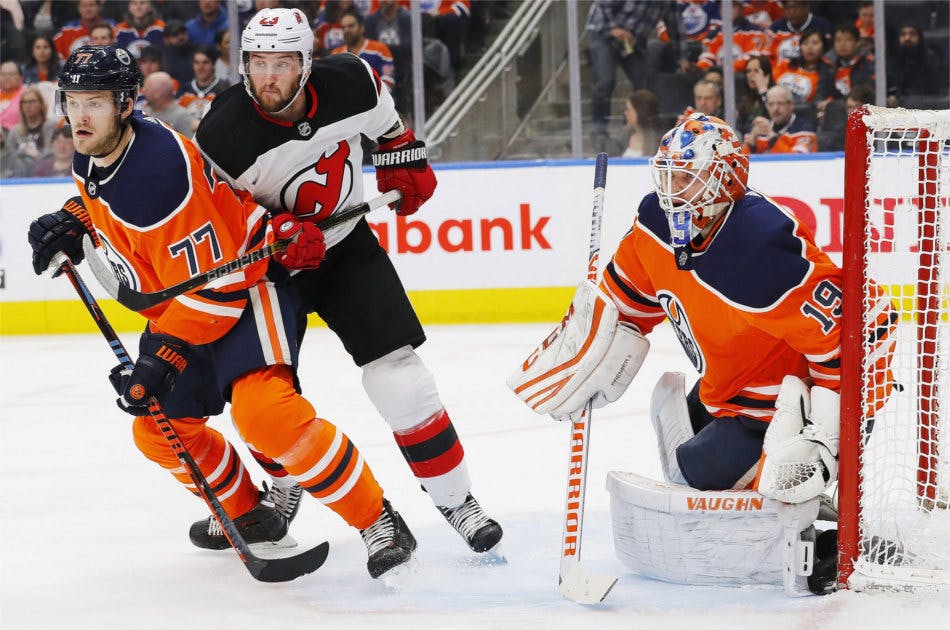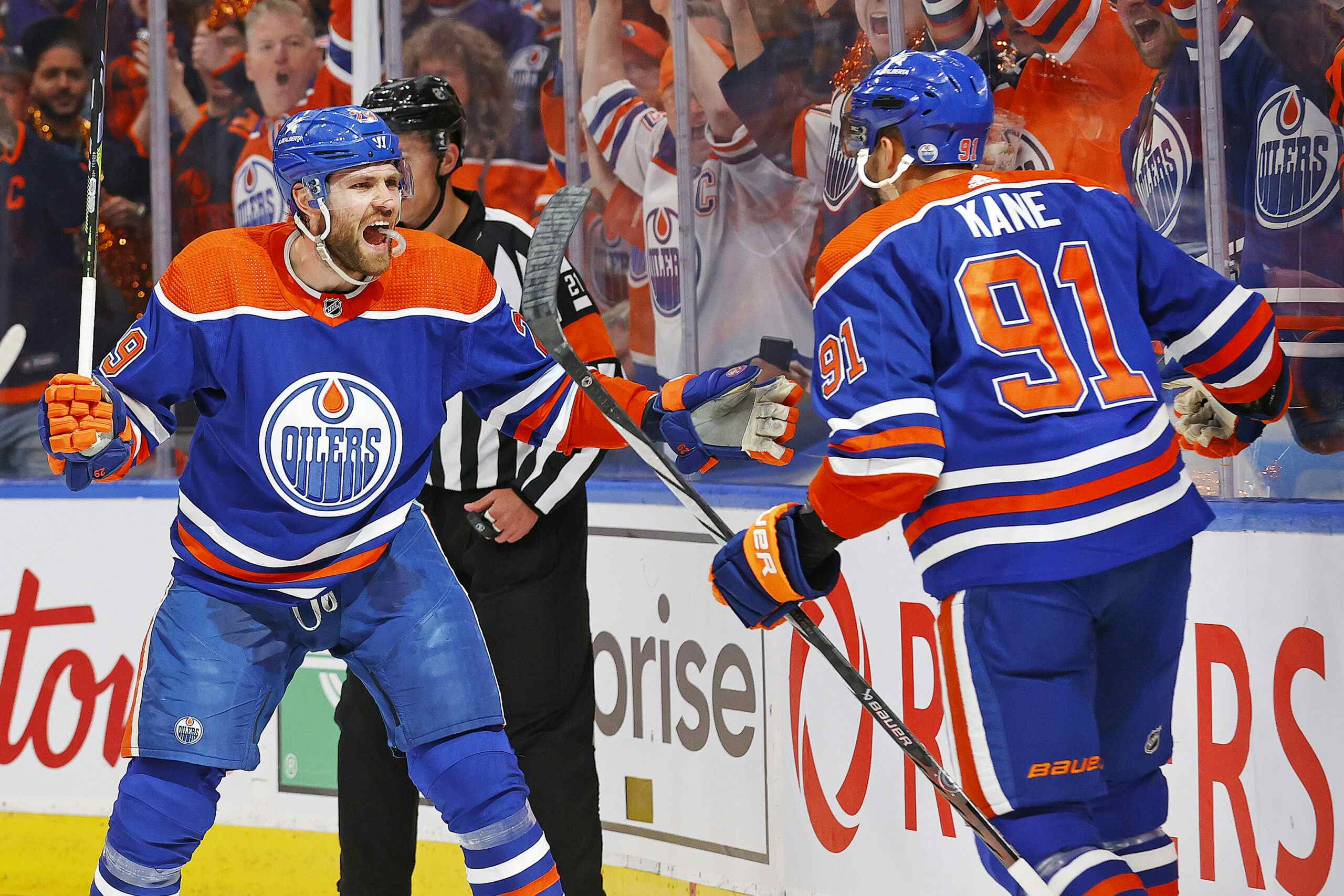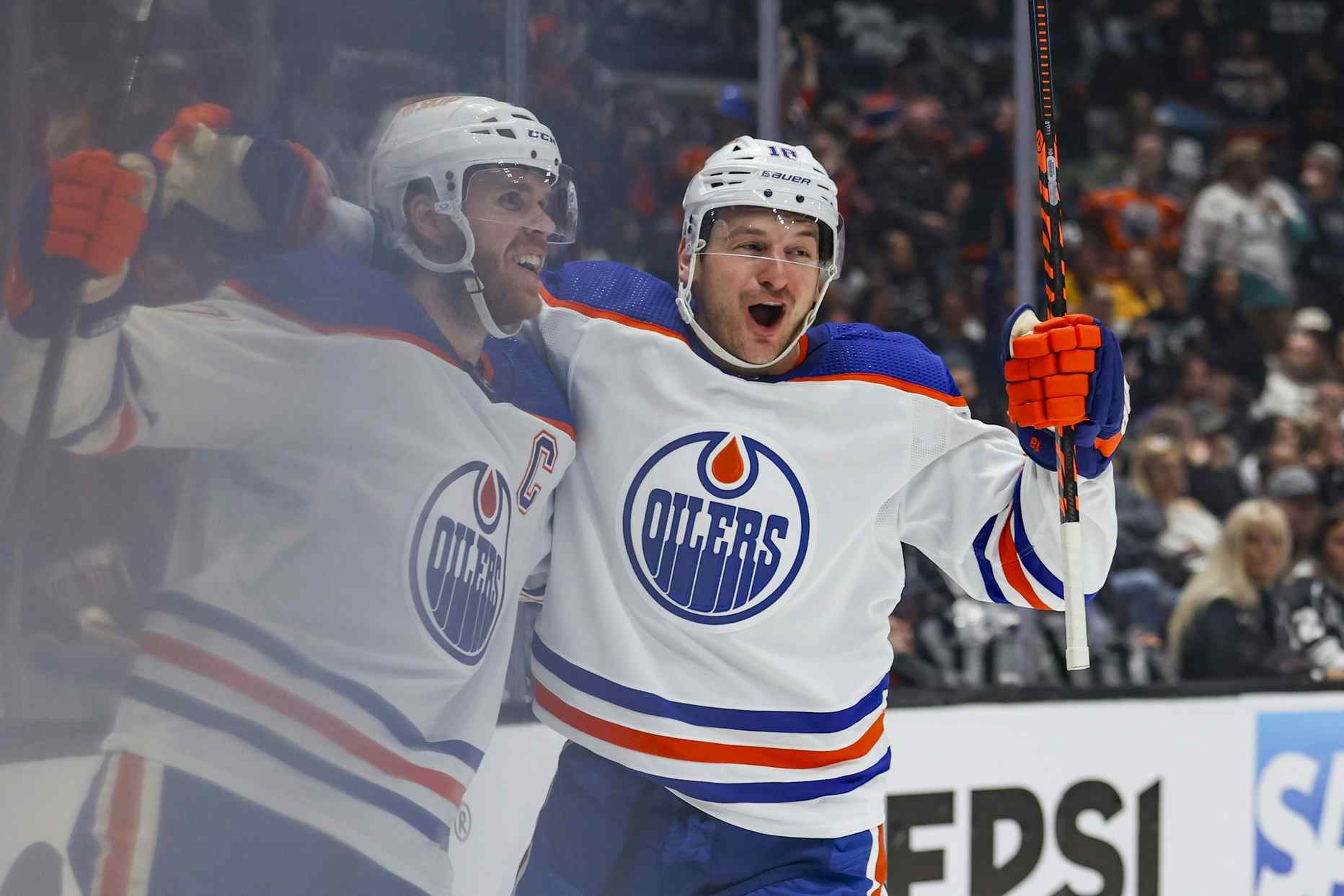Mikko Koskinen: 2018-19 Season in Review

We’re almost there. Less than a month away from the 2019-20 NHL preseason, where hopes are renewed for playoff glory. But, until then, we continue to look back on the woeful season that was the 2018-19 campaign and try to project how some key players might perform in ’19-’20.
The focus for this post, everybody’s not-at-all controversial, de facto starting goaltender: the 4.5 million dollar man himself, @Mikko Koskinen!
To some (most?) Oilers fans, Koskinen remains as the parting “gift” from the extremely liked, not-at-all banished former General Manager Peter Chiarelli, as he was likely packing up his office and looking up the safest way to get out of Edmonton. Koskinen was signed to a three-year, $13.5mil contract on January 21st, then interim GM Keith Gretzky doubled down and traded @Cam Talbot at the 2019 NHL Trade Deadline to the @Philadelphia Flyers, thus effectively handing the reins to Koskinen to close out the season.
But, you all know this. So how did he perform?
| GP | W-L-OTL | GAA | SV% | Shutouts | Saves | Shots Against | TOI |
| 55 | 25-21-6 | 2.93 | .906 | 4 | 1142 | 1247 | 2462:07 |
Average. Actually slightly below. Not a single goaltender leading their team into the 2019 Stanley Cup Playoffs had an overall save percentage under .910. So though there were myriad reasons the Oilers missed the postseason, it certainly not in spite of the goaltending.
But those are only the surface numbers. Generally, a lot more can be gleaned from looking at how a goalie performs under High Danger chances (essentially, these are scoring chances that occur close to the crease, off rebounds, or a rush). Let’s take a look at those:
(Counts are at 5v5; report run against goaltenders with 1500 TOI or more)
| HDSA | HD Saves | HDGA | HDSV% | HDGAA | HDGSAA | Rush Attempts Against | Rebound Attempts Against |
| 337 | 271 | 66 | .804 | 1.61 | -7.89 | 76 | 143 |
Goaltenders rarely ever have a Save% above .900 in these situations (Ben Bishop and Pekka Rinne were the best last season, and they were .878 and .875, respectively). That being said, Koskinen’s was not good at all, though he had some pretty prolific goalies in his territory (M-A Fleury, .801; Devan Dubnyk, .799; Jon Quick, .792). The troubling count is HDGSAA (High Danger Goals Saved Above Average), which basically reflects the difference in goals either being scored or saved in relation to other goalies facing the same number of shots and against the average save percentage. Almost negative 8 is not good.

One last notable breakdown to look at is the numbers at different strengths. Was it a matter of an awful penalty kill in front of him, or was Koskinen just bad all around?
(Note: NHL.com categorizes the strengths stats a little oddly, with “powerplay” meaning when the goaltender was facing the opponent’s powerplay, and shorthanded meaning when they were facing the opponent’s shorthanded unit)
(Report run against goaltenders who played a minimum of 40 games)
| 5v5 | PP | SH | |
| Shots Against | 1300 (19th) | 219 (14th) | 32 (33rd) |
| Goals Against | 113 (13th) | 32 (8th) | 1 (30th) |
| Saves | 1187 (19th) | 187 (14th) | 31 (32nd) |
| Save% | .913 (25th) | .854 (23rd) | .969 (6th) |
Only two goalies had a PP SV% above .900 (who also played a minimum of 40 games), that being Andrei Vasilevskiy (.910) and Devan Dubnyk (.901), so anything in the .890s is good. Koskinen’s was abysmal, near the bottom of goalies who played a minimum of 50 games (he did finish ahead of Fredrick Anderson, though; Mike Smith was last). The 5v5 numbers are actually respectable, and good enough to be a factor if only with some help on special teams. The Oilers’ near-last ranked Penalty Kill is obviously a factor here, but one has to wonder what the chicken and the egg is.
Final Thought

Goaltenders are so volatile. The coward’s reasoning here would be to say that they’re impossible to predict. But frankly, I just think that’s true. @Carey Price is widely considered if not the best goalie in the league, then at least one of the best for almost a decade, and his numbers were close to Koskinen’s last season, and we all know how @Jordan Binnington finished the second half of the campaign on the way to a Stanley Cup championship.
All this is to say that an average goalie can get you to the playoffs. The truth is, Koskinen seems to be average, which could be good enough for the Oilers and their bid for the 2020 postseason. With an improved goal differential and rehabilitated penalty kill (two things I’ve wrote that Tippett has been able to do) could turn slightly-below-average into slightly-above-average. As depressing as that might sound, it really might be all that the Oilers need to make up 10-15 points in the standings.
But, the problem right now is that Koskinen isn’t paid like an average goaltender. Sure, he isn’t making Bobrovsky or Price money, but $4.5mil for a sub-.910 goalie is a hindrance to a team tight against the cap and who could maybe use that extra $2-$2.5mil to get that help upfront to reverse the goal haemorrhaging and fix the PK.
All the team (and fans) can hope for, is that best case scenario Koskinen takes a huge step forward. That, or Mike Smith eases enough of the workload to make Koskinen more effective, or just out-right steals the job. I honestly think that strapping the cart to Koskinen and making him the work-horse late last season wore him down and may have been a factor to that glove hand drooping like melted ice cream at times. (But I’ll also be honest and admit that I have not analyzed Koskinen’s mechanics like the Zapruder filmed. So, if someone has, I’ll gladly admit defeat on that one… you also need to get out more).
The fact is, the crease may be the biggest unknown for the Oilers heading into the season. But really, how often does that seem to be the case for teams around the league?
I would love to see Koskinen work out, particularly because tall, talented Finnish goaltenders have a history of success in the NHL. And it would be a shame to see a tall, talented goalie flame out in Edmonton only to rediscover his game elsewhere. We all know how that feels…
Recent articles from Nicklaus Good





